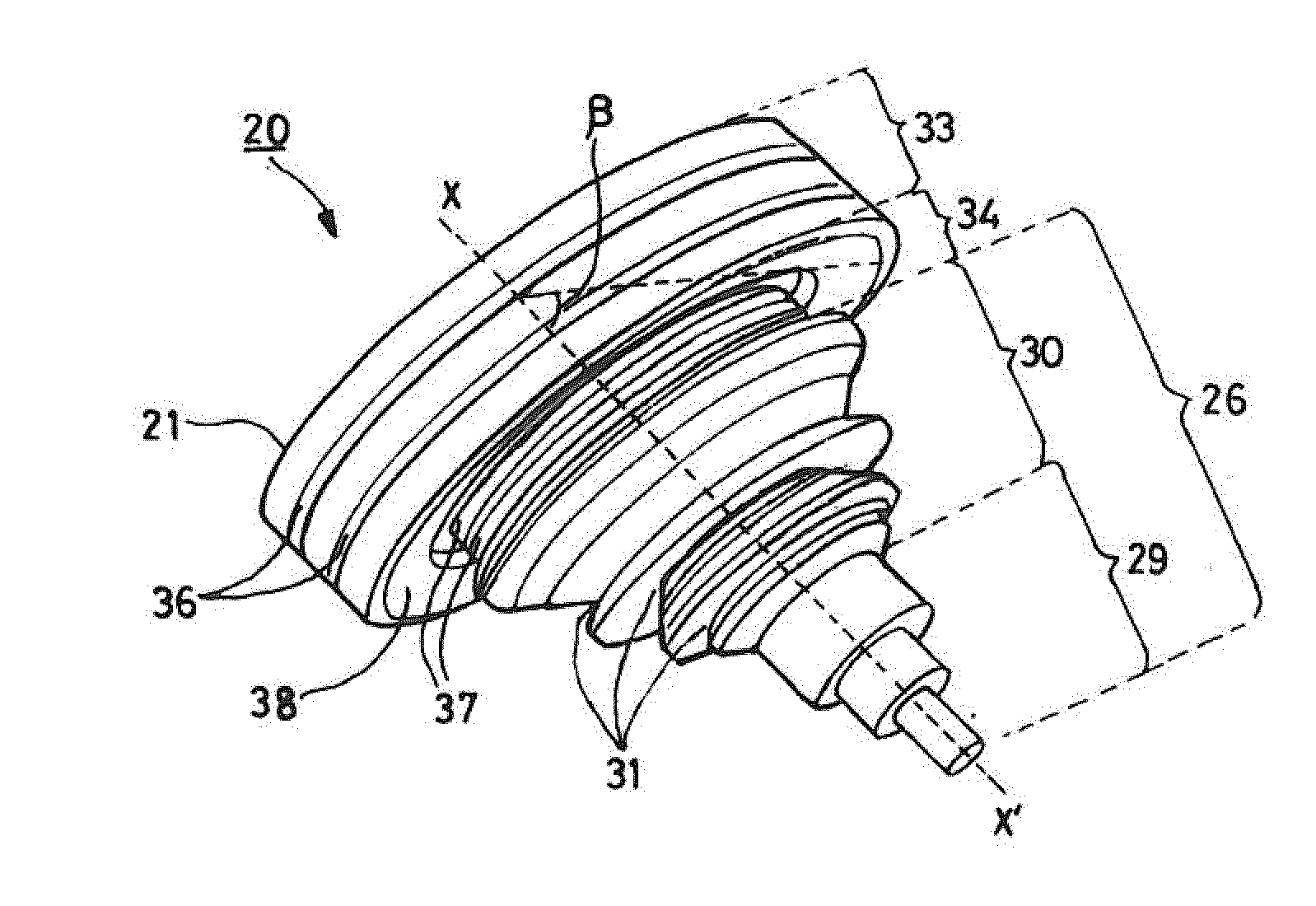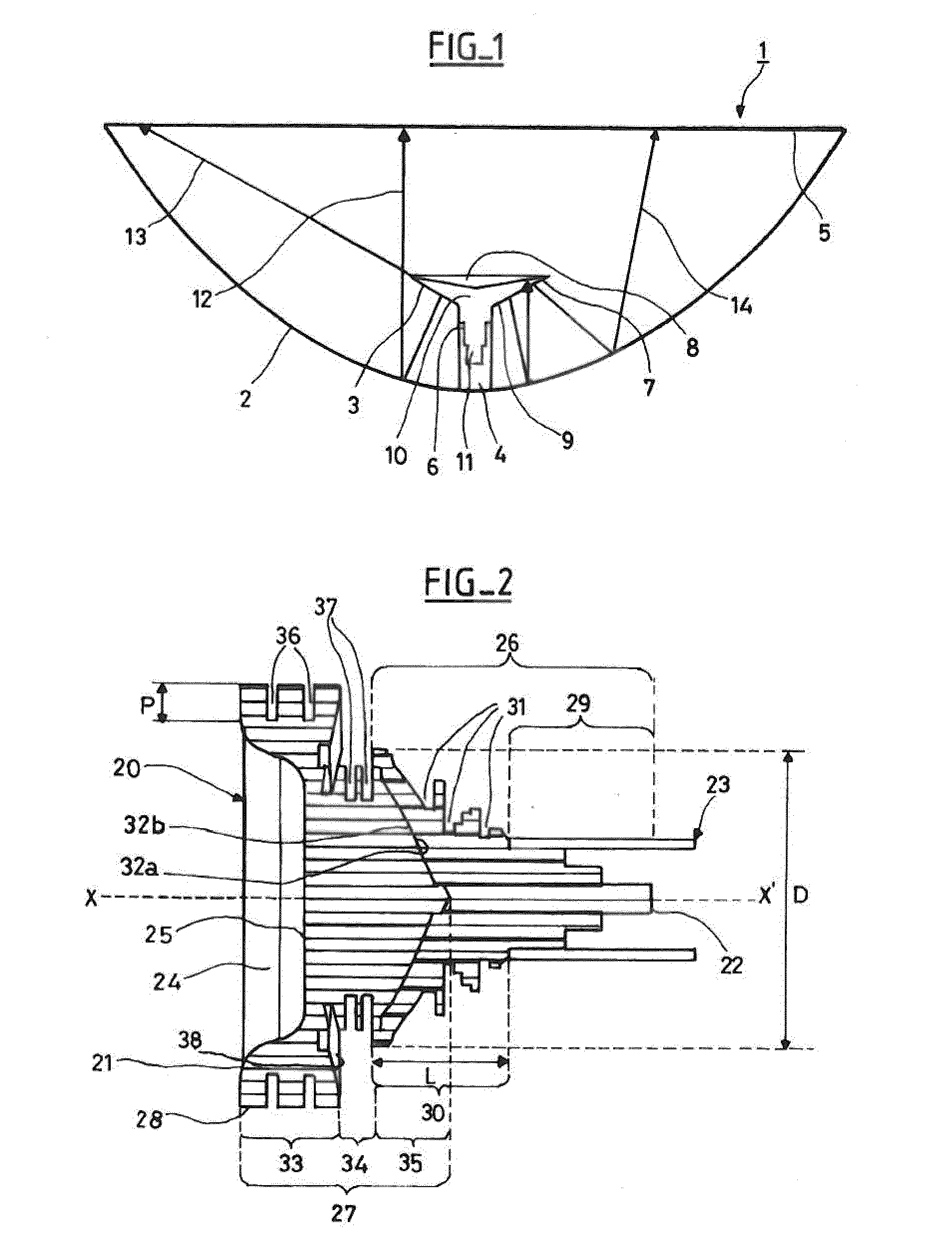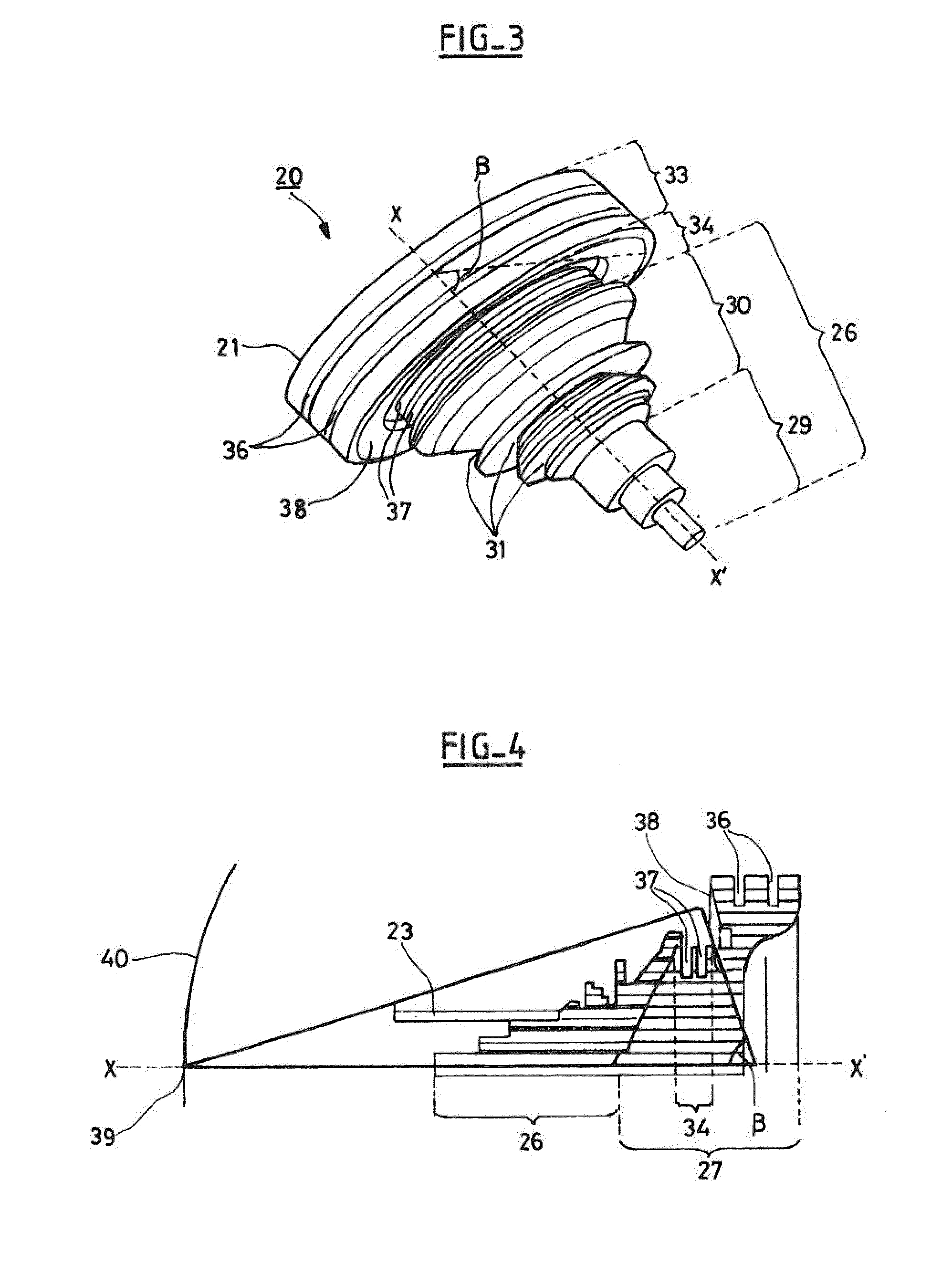Subreflector of a dual-reflector antenna
a dual-reflector, sub-reflector technology, applied in the direction of antennas, electrical equipment, etc., can solve the problems of reducing the front-to-back ratio of the antenna, environmental pollution through rf waves, and high spillover losses, so as to reduce the cost of the dielectric material part, facilitate design, and small in siz
- Summary
- Abstract
- Description
- Claims
- Application Information
AI Technical Summary
Benefits of technology
Problems solved by technology
Method used
Image
Examples
Embodiment Construction
[0041]FIG. 1 illustrates an antenna 1 of a known type with a deep-dish reflector and low focal distance, comprising a primary reflector 2 and a subreflector 3. The antenna 1 is fed by a waveguide 4 which may be a hollow metal tube, for example one made of aluminum. The reflectors 2, 3 are protected by a radome 5. The subreflector 3 comprises a first extremity 6 with a lower radius making the junction with the waveguide 4 and one large-radius open extremity 7, where a convex inner surface 8, which reflects RF signals, meets an outer surface 9 that connects the two ends 6, 7. The outer surface 9 of the sub-reflector 3 is the surface facing the primary reflector 2. The inner surface 8 and the outer surface 9 are surfaces revolving around a single axis of revolution. A dielectric body 10 extends between the first and second ends 6, 7, limited by the inner surface 8 and the outer surface 9. Part 11 of the material of the dielectric body 10 extends to penetrate into the waveguide 4, in or...
PUM
 Login to View More
Login to View More Abstract
Description
Claims
Application Information
 Login to View More
Login to View More - R&D
- Intellectual Property
- Life Sciences
- Materials
- Tech Scout
- Unparalleled Data Quality
- Higher Quality Content
- 60% Fewer Hallucinations
Browse by: Latest US Patents, China's latest patents, Technical Efficacy Thesaurus, Application Domain, Technology Topic, Popular Technical Reports.
© 2025 PatSnap. All rights reserved.Legal|Privacy policy|Modern Slavery Act Transparency Statement|Sitemap|About US| Contact US: help@patsnap.com



